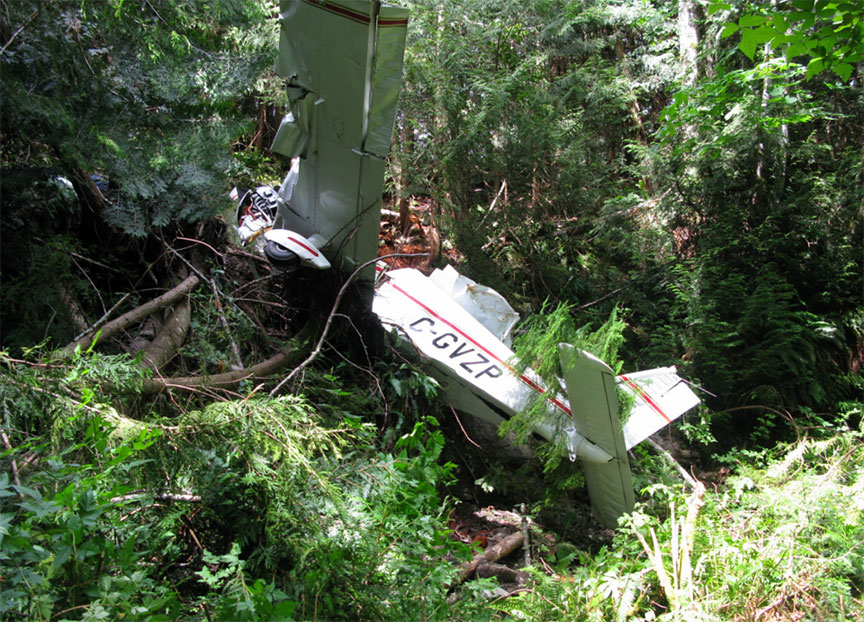Collision with trees after takeoff
Piper PA-28-140, C-GVZP
Sechelt Aerodrome, British Columbia
The occurrence
On , a privately operated Piper PA-28-140 departed Runway 29 at the Sechelt Aerodrome, British Columbia, on a local sightseeing flight with the pilot and three passengers on board. Wind was predominately from the west but was variable and gusty. The aircraft's rate of climb immediately after take-off was low, and as the aircraft overflew the Chapman Creek ravine off the departure end of the runway, the aircraft stopped climbing and flew into trees on the far side of the ravine. The pilot was fatally injured and the three passengers received minor injuries.
Media materials
News release
Investigation report: July 2018 collision with trees after takeoff near Sechelt Aerodrome, British Columbia
Read the news release
Deployment notice
TSB deploys an investigator following a collision with terrain of a private light aircraft in Sechelt, BC
The Transportation Safety Board of Canada (TSB) is deploying an investigator to Sechelt, BC, following the collision with terrain of a private aircraft during take-off. The TSB will gather information and assess the occurrence.
Investigation information
Download high-resolution photos from the TSB Flickr page.
Class of investigation
This is a class 4 investigation. These investigations are limited in scope, and while the final reports may contain limited analysis, they do not contain findings or recommendations. Class 4 investigations are generally completed within 220 days. For more information, see the Policy on Occurrence Classification.
TSB investigation process
There are 3 phases to a TSB investigation
- Field phase: a team of investigators examines the occurrence site and wreckage, interviews witnesses and collects pertinent information.
- Examination and analysis phase: the TSB reviews pertinent records, tests components of the wreckage in the lab, determines the sequence of events and identifies safety deficiencies. When safety deficiencies are suspected or confirmed, the TSB advises the appropriate authority without waiting until publication of the final report.
- Report phase: a confidential draft report is approved by the Board and sent to persons and corporations who are directly concerned by the report. They then have the opportunity to dispute or correct information they believe to be incorrect. The Board considers all representations before approving the final report, which is subsequently released to the public.
For more information, see our Investigation process page.
The TSB is an independent agency that investigates air, marine, pipeline, and rail transportation occurrences. Its sole aim is the advancement of transportation safety. It is not the function of the Board to assign fault or determine civil or criminal liability.
